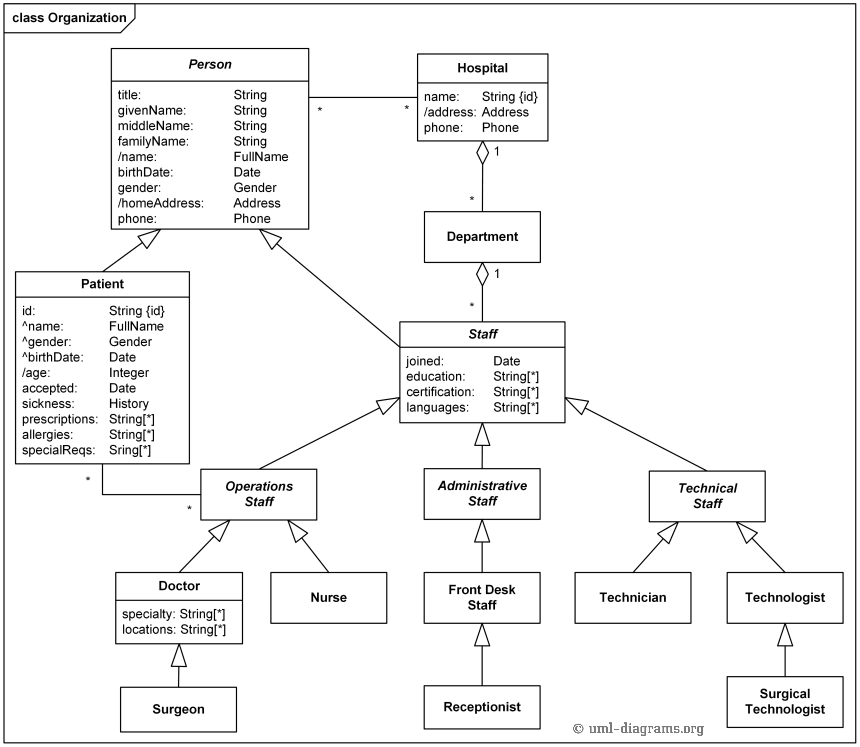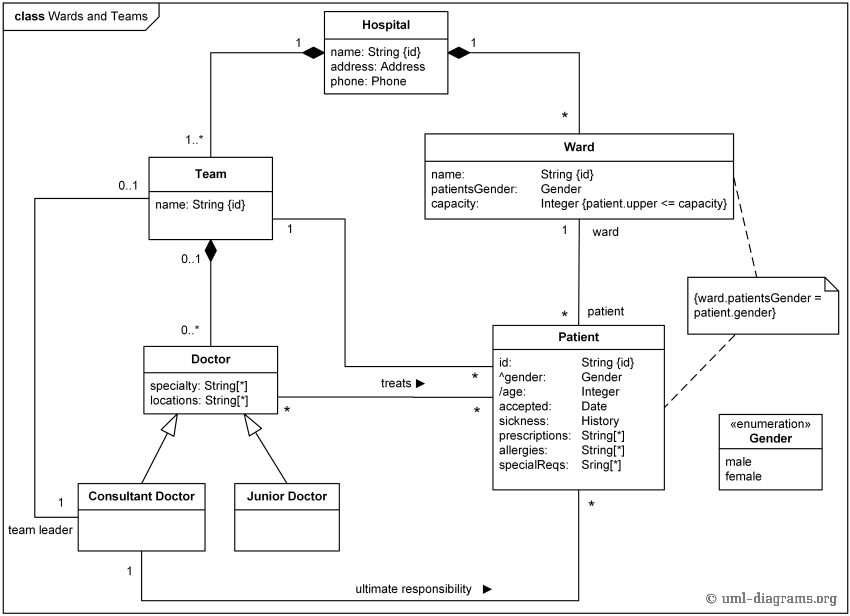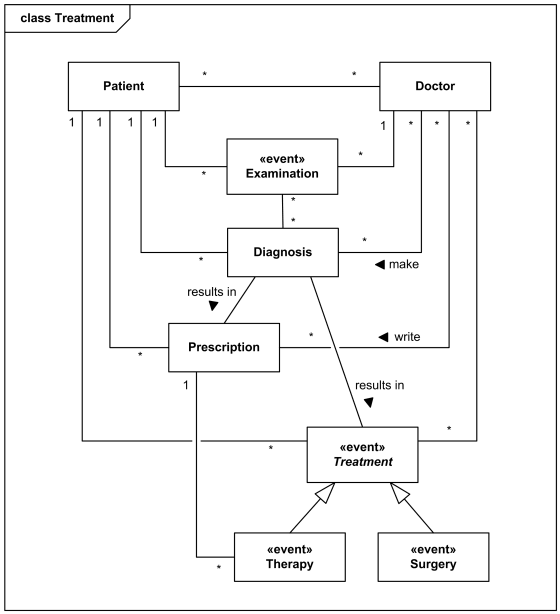Hospital Management
UML Class Diagram Example
This is an example of a hospital domain model diagram. The domain model for the Hospital Management System is represented by several class diagrams. The purpose of the diagram is to show and explain hospital structure, staff, relationships with patients, and patient treatment terminology.
On the diagram below a Person could be associated with different Hospitals, and a Hospital could employ or serve multiple Persons. Person class has derived attributes name and homeAddress. Name represents full name and could be combined from title, given (or first) name, middle name, and family (or last) name. Patient class has derived attribute age which could be calculated based on her or his birth date and current date or hospital admission date.
The Patient class inherits attributes from the Person class. Several inherited attributes name, gender, and birthDate are shown with prepended caret '^' symbol (new notation introduced in UML 2.5).

Hospital organization domain model - Patient, Hospital, Staff - Operations, Administrative, Technical.
Ward is a division of a hospital or a suite of rooms shared by patients who need a similar kind of care. In a hospital, there are a number of wards, each of which may be empty or have on it one or more patients. Each ward has a unique name. Diagram below shows it using {id} modifier for ward's name.
Wards are differentiated by gender of its patients, i.e. male wards and female wards. A ward can only have patients of the gender admitted to it. Gender is shown as enumeration. Ward and patient have constraint on Gender.
Every ward has a fixed capacity, which is the maximum number of patients that can be on it at one time (i.e. the capacity is the number of beds in the ward). Different wards may have different capacities.
The doctors in the hospital are organised into teams (also called firms). Each team has a unique name or code (e.g. Orthopaedics or Pediatrics) and is headed by a consultant doctor (in the UK, Republic of Ireland, and parts of the Commonwealth) or attending physician (also known as staff physician) (in the United States). Consultant doctor or attending physician is the senior doctor who has completed all of his or her specialist training, residency and practices medicine in a clinic or hospital, in the specialty learned during residency. She or he can supervise fellows, residents, and medical students. The rest of the team are all junior doctors. Each doctor could be a member of no more than one team.

Hospital wards, teams of doctors, and patients.
Each patient is on a single ward and is under the care of a single team of doctors. A patient may be treated by any number of doctors but they must all be in the team that cares for the patient. A doctor can treat any number of patients. The team leader accepts ultimate responsibility, legally and otherwise, for the care of all the patients referred to him/her, even with many of the minute-to-minute decisions being made by subordinates.

Domain model - Patient, Doctors and Treatments.